Resources

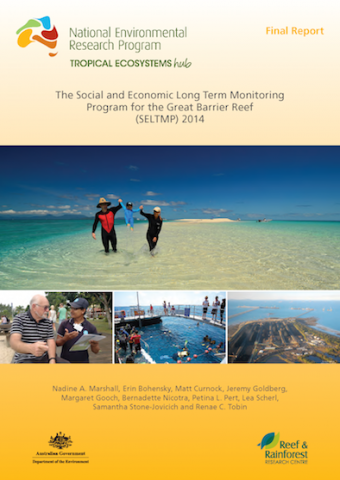 Marshall, N., Bohensky, E., Curnock, M., Goldberg, J., Gooch, M., Nicotra, B., Pert, P.L., Scherl, L., Stone-Jovicich, S., Tobin, R. (2014) The Social and Economic Long Term Monitoring Program for the Great Barrier Reef (SELTMP) 2014.
Marshall, N., Bohensky, E., Curnock, M., Goldberg, J., Gooch, M., Nicotra, B., Pert, P.L., Scherl, L., Stone-Jovicich, S., Tobin, R. (2014) The Social and Economic Long Term Monitoring Program for the Great Barrier Reef (SELTMP) 2014.© CSIRO
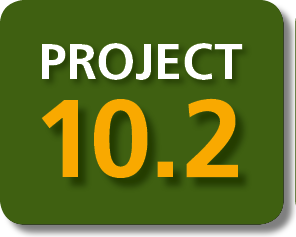
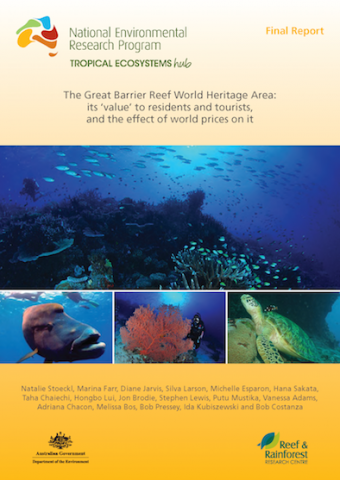 Stoeckl, N., Farr, M., Jarvis, D., Larson, S., Esparon, M., Sakata, H., Chaiechi, T., Lui, H., Brodie, J., Lewis, S., Mustika, P., Adams, V., Chacon, A., Bos, M., Pressey, B., Kubiszewski, I., Costanza, B. (2014) The Great Barrier Reef World Heritage Area: its ‘value’ to residents and tourists, and the effect of world prices on it.
Stoeckl, N., Farr, M., Jarvis, D., Larson, S., Esparon, M., Sakata, H., Chaiechi, T., Lui, H., Brodie, J., Lewis, S., Mustika, P., Adams, V., Chacon, A., Bos, M., Pressey, B., Kubiszewski, I., Costanza, B. (2014) The Great Barrier Reef World Heritage Area: its ‘value’ to residents and tourists, and the effect of world prices on it.
© JCU
![]() NERP-TE-PROJECT-10.2-FINAL-REPORT-PARTA
NERP-TE-PROJECT-10.2-FINAL-REPORT-PARTA
![]() NERP-TE-PROJECT-10.2-FINAL-REPORT-PARTB
NERP-TE-PROJECT-10.2-FINAL-REPORT-PARTB
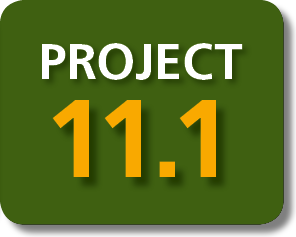
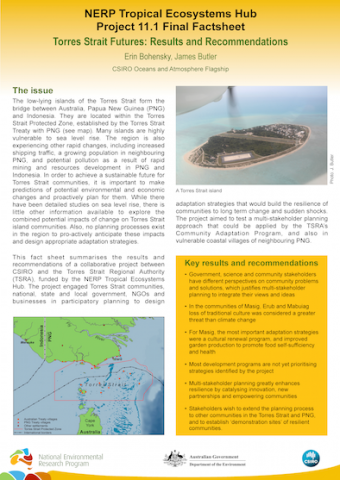 Bohensky, E., Butler, J. (2014) Torres Strait Futures: Results and Recommendations.
Bohensky, E., Butler, J. (2014) Torres Strait Futures: Results and Recommendations.
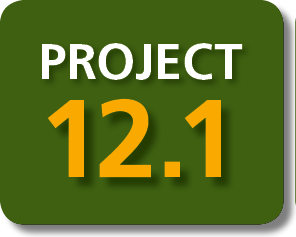
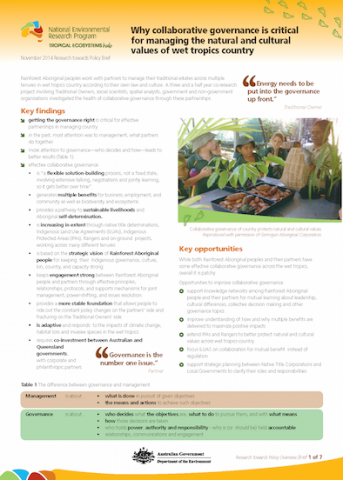 Hill, R. (2014) Why collaborative governance is critical for managing the natural and cultural values of wet tropics country.
Hill, R. (2014) Why collaborative governance is critical for managing the natural and cultural values of wet tropics country.

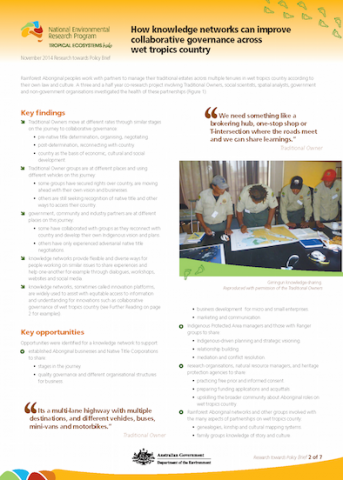 Hill, R. (2014) How knowledge networks can improve collaborative governance across wet tropics country.
Hill, R. (2014) How knowledge networks can improve collaborative governance across wet tropics country.
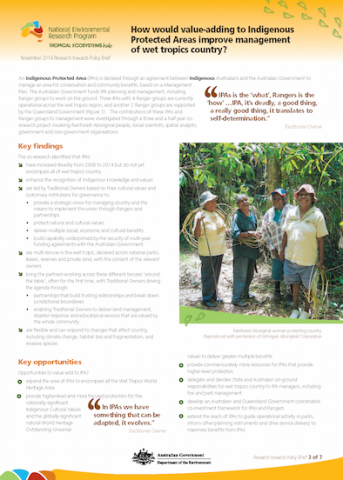 Hill, R. (2014) How would value-adding to Indigenous Protected Areas improve management of wet tropics country?
Hill, R. (2014) How would value-adding to Indigenous Protected Areas improve management of wet tropics country?
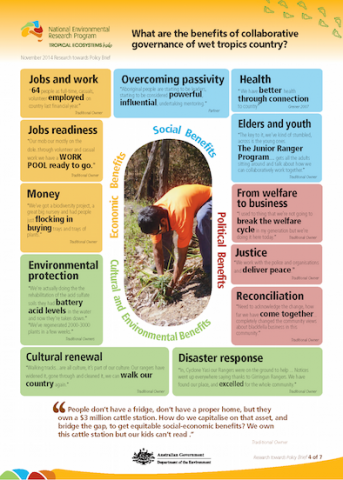 Hill, R. (2014) What are the benefits of collaborative governance of wet tropics country?
Hill, R. (2014) What are the benefits of collaborative governance of wet tropics country?
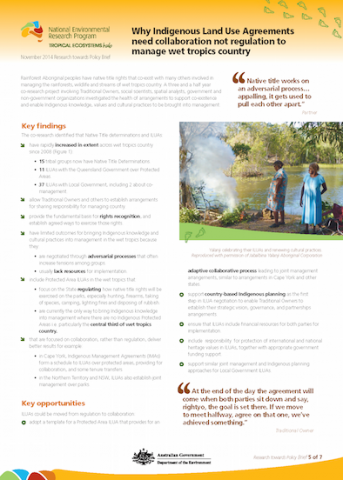 Hill, R. (2014) Why Indigenous Land Use Agreements need collaboration not regulation to manage wet tropics country.
Hill, R. (2014) Why Indigenous Land Use Agreements need collaboration not regulation to manage wet tropics country.
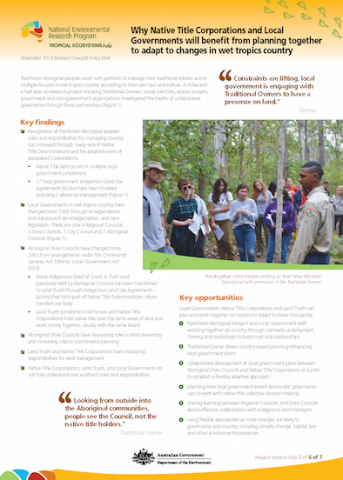 Why Native Title Corporations and Local Governments will benefit from planning together to adapt to changes in wet tropics country.
Why Native Title Corporations and Local Governments will benefit from planning together to adapt to changes in wet tropics country.
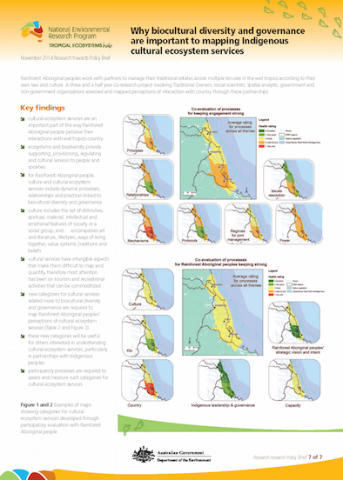
Hill, R (2014) Why biocultural diversity and governance are important to mapping Indigenous cultural ecosystem services.


